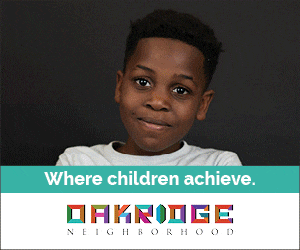Catch a Google Wave

.floatimg-left-hort { float:left; } .floatimg-left-caption-hort { float:left; margin-bottom:10px; width:300px; margin-right:10px; clear:left;} .floatimg-left-vert { float:left; margin-top:10px; margin-right:15px; width:200px;} .floatimg-left-caption-vert { float:left; margin-right:10px; margin-bottom:10px; font-size: 12px; width:200px;} .floatimg-right-hort { float:right; margin-top:10px; margin-left:10px; margin-bottom:10px; width: 300px;} .floatimg-right-caption-hort { float:left; margin-right:10px; margin-bottom:10px; width: 300px; font-size: 12px; } .floatimg-right-vert { float:right; margin-top:10px; margin-left:10px; margin-bottom:10px; width: 200px;} .floatimg-right-caption-vert { float:left; margin-right:10px; margin-bottom:10px; width: 200px; font-size: 12px; } .floatimgright-sidebar { float:right; margin-top:10px; margin-left:10px; margin-bottom:10px; width: 200px; border-top-style: double; border-top-color: black; border-bottom-style: double; border-bottom-color: black;} .floatimgright-sidebar p { line-height: 115%; text-indent: 10px; } .floatimgright-sidebar h4 { font-variant:small-caps; } .pullquote { float:right; margin-top:10px; margin-left:10px; margin-bottom:10px; width: 150px; background: url(http://www.dmbusinessdaily.com/DAILY/editorial/extras/closequote.gif) no-repeat bottom right !important ; line-height: 150%; font-size: 125%; border-top: 1px solid; border-bottom: 1px solid;} .floatvidleft { float:left; margin-bottom:10px; width:325px; margin-right:10px; clear:left;} .floatvidright { float:right; margin-bottom:10px; width:325px; margin-right:10px; clear:left;} E-mail is an ancient tool, at least in terms of technology. E-mail was first possible about 40 years ago, even before the Internet itself was developed in the 1980s.
So when Google developers sat down to develop a new communication and collaboration tool, they asked themselves one question.
What would e-mail look like if it were invented today?
The result of their attempts to answer that question? Google Wave, a real-time communication and collaboration platform that the company feels could revolutionize not only e-mail, but how business gets done.
Whether or not that happens is still to be seen.
Google developers unveiled their new product to the world last May at a developer preview conference, and opened it up to 100,000 users at the end of September on an invitation-only basis. The number of people previewing Wave continues to grow as Google hands out additional accounts. Those lucky enough to have received a Wave account have a limited number of invites they can send to friends or colleagues.
Google made the code for Wave open, and has used this partial launch release strategy by design to allow developers a head start on creating additional gadgets for Wave. This also allows Google to receive feedback from users and work out bugs. Although Wave is still in preview mode, and a variety of bugs still need to be worked out, Google told TechCrunch.com in September that although there is no specific timetable, it should be released to the general public in 2010.
Google posted a 1 1/2-hour video from the developer’s conference that fully explains what Wave is, and shows demonstrations of how to use it. So far the video has been viewed more than 8.5 million times on Youtube.
As with any new piece of technology, the concept can be a bit hard to grasp. (Cough, Twitter.) And let’s face it, you’ve likely grown fond of your e-mail system by now. So in an effort to get you ready for any changes to your communication life, here is a guided tour based on the video, describing what Wave is, its drawbacks, and ways it could be used to revolutionize business communication.
What is Google Wave:
Users of Google Wave will go to a home page that looks very similar to a normal e-mail platform. Now pretend you’d like to send a message to a business client about meeting for lunch. Instead of sending an e-mail, you would create a Wave and invite the client to view your message that is now in the Wave. The client would get a message in his Google Wave inbox, just like an e-mail, and he could then respond on the Wave.
This is all pretty much the same as e-mail, except that this Wave is being hosted out on the Internet. Instead of thinking about individual messages being sent back and forth, as with e-mail, Google Wave thinks of the entire conversation as a living document shared on a server. This allows you to invite other people in to view and participate in the conversation you’re having with your client. And not only that, but they can respond to previous messages, and their comment will show up right below the original message. In a sense, it is like a personal message board with only people you invited participating. All the people participating in the thread see the same thing on their screen, and if someone is invited in late, after a day or so of messaging, there is a playback option that replays in chronological order how the conversation took place.
The idea is to make it easier to bring people into conversations. Pretend you send an e-mail out to five members of the staff asking their opinion about the newest budget projections. One employee responds to all, which prompts another employee to respond to all. You now realize “Dave” needs to be in on this e-mail thread. So you CC him too and you reply all. In the meantime, two other employees reply all to the message that Dave isn’t on. Now when Dave gets to his e-mail an hour later, he has a mess of a conversation and is missing key pieces. A couple of hours of copy and pasting and three Tylenol pills later, Dave finally catches up. Google Wave eliminates this headache.
What is more, Wave combines two tools, e-mail and instant messaging, into one. When two or more people are looking at the Wave at the same time, the Wave is live. This means that as you type, the other people on the Wave can see what you are typing, character for character. This eliminates the need to press enter, and means people spend 100 percent of the time reading and writing, instead of waiting for responses like with all current instant messaging services.
If you don’t want to be live, and there are times you won’t want to be, there is a simple button to uncheck. Regardless of what form you are in, the whole service is immediate. There is no waiting for e-mails to travel through cyberspace because responses are instantaneous posted to the Wave.
E-mail and chatting functions are the most basic of Google Wave’s uses, but understanding its basic use helps with trying to understand its more advanced collaboration uses.
Collaboration:
The greatest asset that Google Wave brings is the potential for being a fantastic collaboration tool. Because multiple people can access a Wave, contribute to it and edit it, the tool can allow for collaboration on projects, note taking, interaction and communication. For example, a public relations intern could write a first draft of a press release about a new product launch. She could post her release in a Wave, and invite her five superiors to it. Those five superiors could then, in real time, simultaneously edit and comment on the press release. The PR intern could make the suggested changes, and send it off for final approval to the company CEO, who could then see the original version, and because of the playback function, see all the edits that were made.
There are endless collaboration possibilities in a business setting, where a Wave could increase communication and smooth work flow patterns. Furthermore, Google has said spreadsheets and PowerPoint-like presentation functions could be incorporated in Waves in the future.
Here is a list of three additional ways. Google Wave could be used in a business setting. To see other uses go to http://tinyurl.com/waveuses.
1) Project collaboration
If you have a document-based project that multiple people will be contributing to, a Wave could be constructed that allows each team member to add in their specific piece of the project, making for easier project compilation. Subsequently, the users could see what each group is working on at the same time, and chat back and forth with other team members.
2) Brainstorming
Need to come up with a new product name, or need to find a solution to a problem? Just post a question in Wave and invite your employees to provide their ideas in a central location. Everyone can contribute and provide feedback on the feasibility of the different ideas.
3) Status reporting
If your business is working on a project with multiple deadlines and moving pieces, create a Wave along with a list of tasks that allows employees to keep everyone in the project updated on their current status. It also could mean greater ease of mind for the project manager.








